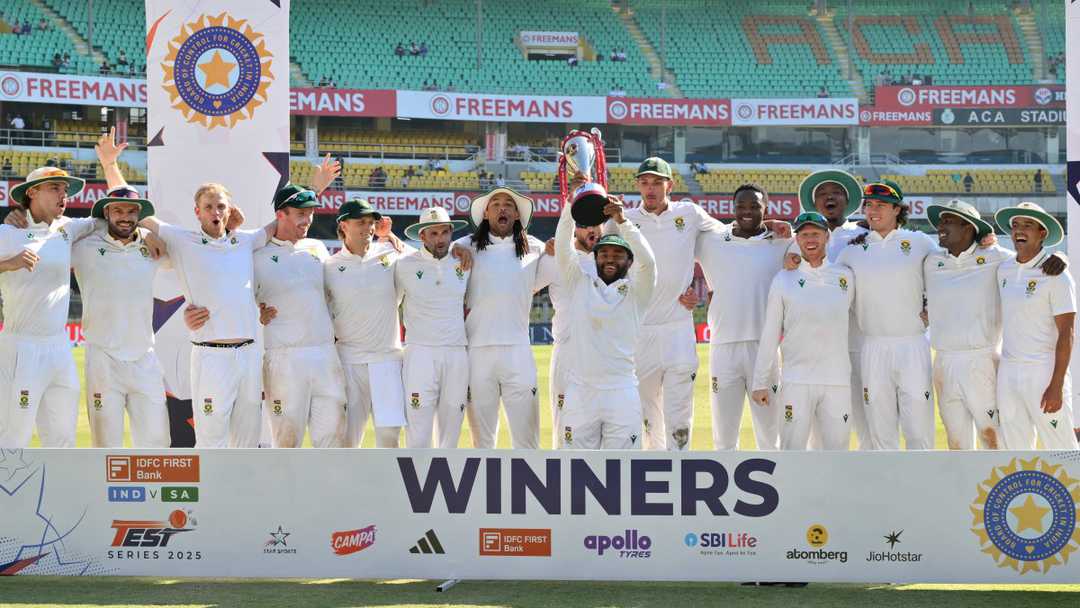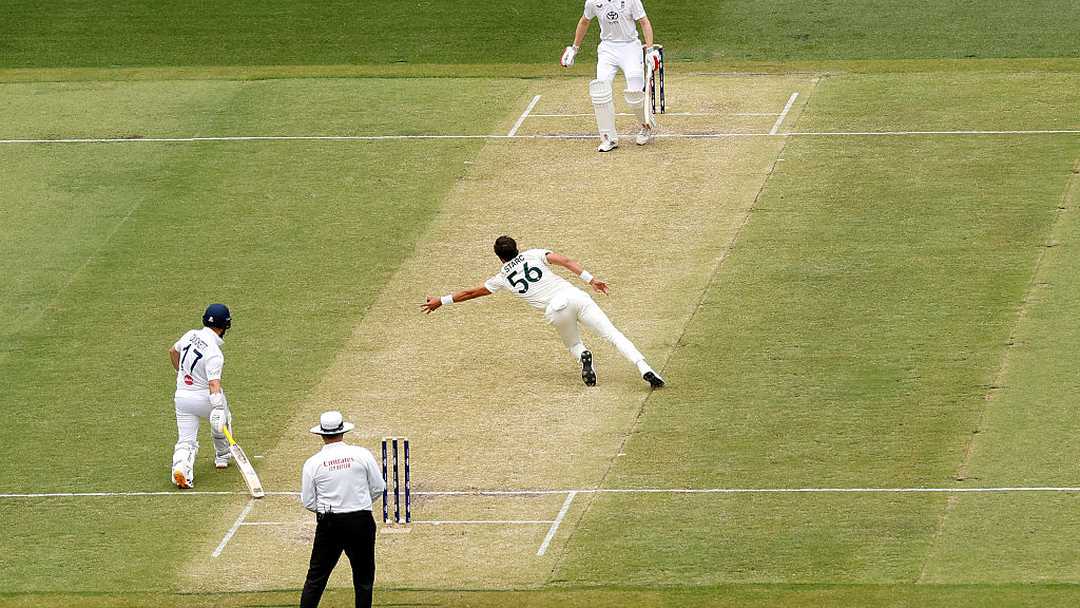
South Africa's journey from darkness into the light
Metaphors inspired by Marco Jansen usually have something to do with height. But when he sprinted through the sunshine that bathed Guwahati's outfield on Wednesday, launched all of his 2.08 metres into the shade cast by a building, stuck up his left hand in what seemed a hopeless attempt to take the impossible catch that would end the Test series, crashed to earth, and came up having somehow caught the ball, another kind of analogy presented itself.
It was centred on a stretch of time and place, a journey, a story of change, a thing of defeat after defeat after defeat. And now this.
Jansen had indeed gone from sunshine into shade. But the meaning of the moment was the culmination of South Africa emerging from darkness into light.
That journey began when Jansen was 56 days old. He was five months and not quite a week away from his 26th birthday when the destination was reached.
Between those two days South Africa played five series comprising 14 Tests in India without bringing the Freedom Trophy home. Two rubbers ended level, but only two Tests were won and three drawn. India's nine victories dominated the scoreline.
The journey started in Bengaluru on March 6, 2000, when South Africa won by an innings and 71 runs to seal their first series win in India at their second attempt. Until Wednesday, it would be their only series win in India.
Of South Africa's current squad, Tristan Stubbs and Dewald Brevis were not yet born when it happened the first time. The oldest member, Simon Harmer, had just turned 11. Temba Bavuma was approaching double figures. Now those four players are part of a glittering present.
India is the jewel in the crown, the place that has been the most foreign and hostile to the South Africans – not because of anything their hosts have done, but largely due to their ignorance of how to both bat against and bowl quality spin.
They didn't understand spin except as an intermission between relentless spells of pace. Their home conditions ensured that they remained unenlightened for years. That was another journey out of darkness that started on November 3, 2016 – when Keshav Maharaj made his debut at, of all places, the Waca.
Maharaj took four wickets in the match, among them that of Steve Smith. When he claimed 5/94 in Dunedin in March 2017, something stirred. Maybe, South Africans told themselves, we should take this spin stuff a little more seriously. Thus was the revolution sparked, and Maharaj was its Robespierre.
Without the rise and rise and rise of the flinty, fastidious, ever-plotting, never-stopping Maharaj, there is no way South Africa would have put their trust in spin to win a Test anywhere. They sometimes did pick more than one slow poisoner in their XIs, usually in Asia, but that was more out of convention than any real belief that the route to success went through spin.
That the revolution had succeeded was confirmed at the toss in Guwahati on Saturday. Previously, given the choice between Lungi Ngidi and Senuran Muthusamy, the fast bowler was guaranteed to crack the nod. Especially if the modern giant who is Kagiso Rabada, the inheritor of the long and illustrious title of the leader of South Africa's attack, was ruled out through injury. Not this time.
Simon Harmer had made his debut almost two years before Maharaj, or while South Africa were still suspicious of spin as a worthwhile investment. Dane Piedt was also around. It was complicated. Harmer went Kolpak and Piedt went to the US. But Maharaj kept the faith, and the faith kept him well enough to make room for the returning prodigal Harmer.
South Africa's batters, too, realised they needed to wake up to the turning ball. The latest evidence of that is that Muthusamy scored the only century of this series and Stubbs and Jansen made it into the 90s. No Indian made more than Yashasvi Jaiswal's 58 in the first innings in Guwahati.
These were all moving parts that might have amounted to something smaller than their sum had a catalyst not been introduced. Make that two catalysts. Bavuma is a survivor of South Africa's dismal series in India in November 2015 and October 2019, when probably only rain for four days in Bengaluru in 2015 saved them from losing all seven Tests. Then came Shukri Conrad, and everything changed.
Bavuma has held South Africa together for his entire career, and particularly since he was made captain in February 2023. Conrad, who made the decision to elevate Bavuma, hasn't only shown South Africa the promised land. He's also led them there. But the players, of course, have had to take charge of that journey.
No captain has won more Tests in their first dozen in charge than Bavuma's 11; the other was drawn. Under Conrad, South Africa have won 16 and drawn one of their 21 Tests. The WTC final against Australia at Lord's is among their successes. As are five wins in their last six Tests in Asia.
The soul-searching in India is well underway. First the 3-0 drubbing at home by New Zealand last October and November. Now this. But before the Indians disappear into darkness from whence the South Africans have come, they should know this.
Their latest hurt was inflicted by unarguably the best team yet to call themselves South Africa. And, right here, right now, the finest team in all the game.


